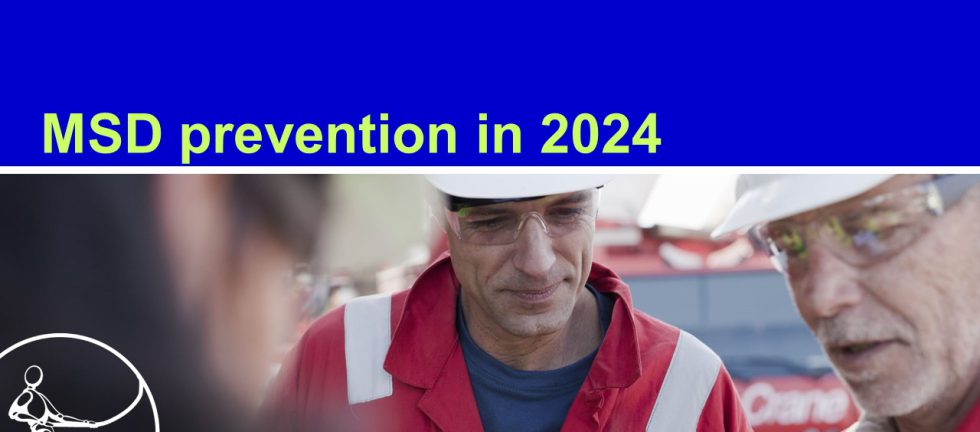I have some personal resolutions for 2024; I’ll take off the pounds that I put on during hibernation season, and work back up to running 10 km. (I make and achieve the same resolutions virtually every year.)
Now is the time for reflecting on last year, and setting goals for the coming year. Our ergonomists are meeting with their regular On-Site Ergo (OSE) clients to collaborate on goals for their MSD (musculoskeletal disorder) prevention programs this year. For more information about our OSE program, click here.
Resolutions are more successful when you get some help, and commit your goals to paper. Not sure where you’re headed? Here are some ideas:
If strain/sprain injuries continue to rank #1 in your organization, you’re not alone. To tackle these injuries in 2024:
- Analyze your strain/sprain injury stats to figure out which departments report the most injuries. Calculate the rates based on the number of employees in each department. (# of strain/sprain injuries per full-time employee in each department).
- Interview supervisors in these departments to identify which tasks or jobs are associated with these injuries. While you’re talking with them, ask:
- Are these tasks also associated with quality or production problems?
- Do they have trouble keeping people in these jobs?
- Engage the services of a Certified Ergonomist (www.cccpe.ca) to perform risk assessments and provide recommendations for your top 5 priority jobs.
- Implement change, and monitor results.
If lots of people reported general aches and pains last year, but perhaps not “injuries”, investigate the tips and tricks used by experienced workers. We call these “Best practices” or “Ergonomic work strategies”. We can help you to create training to encourage everyone to use “ergo” work strategies by:
- Working with experienced employees to identify ergonomic work strategies
- “Proving” that these strategies offer a biomechanical advantage using our advanced analysis tools.
- Creating posters to raise awareness of the ergo work strategies
- Creating coaching plans to allow supervisors or your JHSC to encourage employees to use ergo work strategies effectively
- Creating formal training to ensure that all employees are taught the ergo work strategies in an off-line environment
- Creating a train-the-trainer program to allow your trainers, supervisor, or JHSC members to run the training in the future
If you’ve had trouble managing claims or accommodating workers with limitations:
- Inventory your physical and cognitive demands analyses (PCDAs). If they are more than two years old, work with the supervisors to identify updates that need to be made.
- Get some training, or hire an ergonomist (or mentored intern!) to complete or update your PCDAs. Without these documents, you lack objective information about your jobs, which makes it impossible to fairly and objectively place workers or manage claims.
- We can provide job coaching to support employees following an absence or injury. Job coaching involves identifying and coaching employees to use job-specific best practices, and suggesting stretching and strengthening exercises that will improve the employee’s capacity to perform the assigned job.
- If you’re still having trouble, our ergonomists can provide a third-party professional opinion about job suitability in a “Demands-Abilities Evaluation”.
Of course, we’d be happy to help with any of your 2024 initiatives! Contact info@taylordergo.com.


